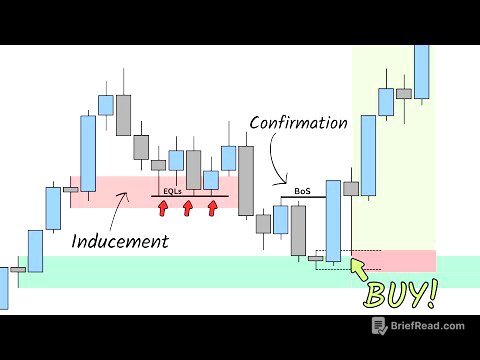TLDR;
The video discusses the current AI boom and its potential parallels to the dot-com bubble of the late 1990s. It identifies three hidden forces behind the potential AI bubble: the AI arms race among major tech companies, the AI money machine involving circular investments, and the AI data wall, which refers to the limits of available data for AI training. The video advises viewers to continue investing, increase their income, and diversify their portfolios to navigate the potential risks and opportunities of the AI boom.
- The AI boom has parallels to the dot-com bubble.
- Seven companies dominate the AI arms race.
- Circular investments are artificially inflating the value of AI companies.
- AI's progress may be limited by the availability of data.
- Continue investing, increase income, and diversify portfolios.
Intro [0:00]
The video starts with a comparison to the dot-com bubble of 1998, where overconfidence and hype led to a significant market crash. The speaker draws parallels to the current AI boom, noting the similar energy and potential for a bubble. Despite the risks, the speaker aims to provide an honest perspective on the situation, outlining the hidden forces behind the AI boom and offering advice on how to benefit from it.
1. The AI Arms Race [1:57]
The fate of the stock market is currently being heavily influenced by seven companies, known as the "Magnificent Seven": Amazon, Microsoft, Alphabet, Meta, Apple, Tesla, and Nvidia. These companies constitute approximately 36% of the S&P 500 and are engaged in an intense competition to dominate the field of artificial intelligence. Their investments in AI are substantial, with projected spending reaching $330 billion in one year. This spending is likened to a fourth industrial revolution, but it also raises concerns about the sustainability of the economy, as this spending may be artificially propping it up. The global AI spending is expected to reach $500 billion by the end of 2026, with power and resources for electricity demand topping $3 trillion annually by 2030. The International Monetary Fund estimates that about 60% of jobs in the developed world are exposed to AI, meaning they could be transformed or replaced by automation in the coming years.
2. The AI Money Machine [5:20]
The "AI money machine" describes a concerning trend of circular investments among AI companies. Companies like Intel, AMD, and Nvidia design chips, which are then purchased by companies like OpenAI and XAI, as well as data centers like Oracle and Coreweave. The data centers lease computing power to AI companies. However, the flow of money becomes circular when investors at Microsoft fund OpenAI, who then pay Microsoft to use their data centers. Microsoft then uses that money to buy Nvidia chips, and Nvidia invests back into OpenAI. This allows each company to record the flow as revenue, which pushes their stock prices up. OpenAI is currently valued at more than 40 times its revenue, but it's losing money every month. AI services are not making enough money to justify their stock prices.
3. The AI Data Wall [10:05]
AI's rapid improvement has been fueled by devouring vast amounts of public data. However, by 2027, AI is expected to have consumed nearly all human-generated online content, leading to a "data wall." This limitation could slow down progress and cause expectations to collapse, potentially bursting the AI bubble. Humans learn from interacting with the world, not just from being fed data. Scaling past the data wall is possible, but it requires different data and new approaches to learning.
My Honest Thoughts (& what to do) [11:57]
While the current AI boom shares similarities with the dot-com bubble, there are key differences. AI companies have real utility and a clearer path to profits compared to the dot-com era. However, signs of a bubble persist, including overvaluation, faking revenue, geopolitical mania, and scaling limits. To navigate this uncertain landscape, the speaker recommends continuing to invest regularly in broad, low-cost index funds, increasing income through promotions or side hustles, and diversifying investments across various asset classes like stocks, bonds, precious metals, real estate, and cryptocurrency. Dividend-paying stocks are also highlighted as a valuable asset during downturns due to their passive income generation.









